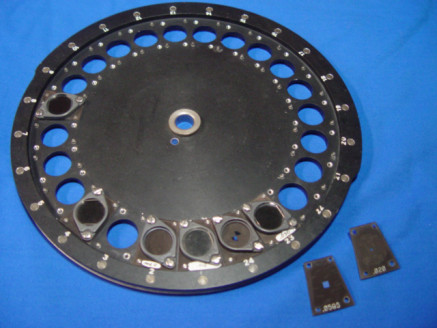From H. Joseph Gerber to Gerber-X2
Computer-automated manufacturing
Known as the “Thomas Edison” of manufacturing, Joseph pioneered computer-automated manufacturing systems which resulted in all sorts of data reduction, scanning, cutting, drafting and plotting machines and technologies. One of these was the “photoplotter”, an optical plotter capable of plotting digital graphics directly on photographic film that revolutionized printed circuit board (PCB) manufacturing. Joseph’s computer-automated machines also invaded the textile and sign-making industries; in the end virtually every industry has profited from Joseph’s inventions.
Gerber photoplotter
The photoplotter uses a lamp to flash dots of different diameters onto a photosensitive surface. A rotating aperture wheel mounted on the plotter’s head determines the diameter of the dots. Moving the head with the lamp on allows vectors and arcs to be drawn; by placing dots of the right sizes in the right places any shape can be obtained. The maximum resolution is limited by the size of the smallest opening in the aperture wheel.Gerber-RS274-D
The EIA RS-274-D standard describes a variable block data format—also known as G-codes—for positioning and contouring numerically controlled (NC) machines. Gerber used a subset of this standard to control the photoplotters, a data format that became known as Gerber-RS274-D or Standard Gerber. Two files are needed to describe a drawing in Gerber-RS274-D: a file with a list of coordinates and a file with a list of the apertures needed. The first edition of the Gerber Format was published by Gerber Systems Corporation (GSC) in 1980.
D11*
X1785250Y2173980D02*
X1796650Y2177730D01*
X1785250Y2181480D01*
X1796650Y2184580D01*
D12*
X3421095Y1407208D03*
X1785250Y2173980D03*
M02*
An example of Standard Gerber.Read full article
Hide full article


Discussion (0 comments)